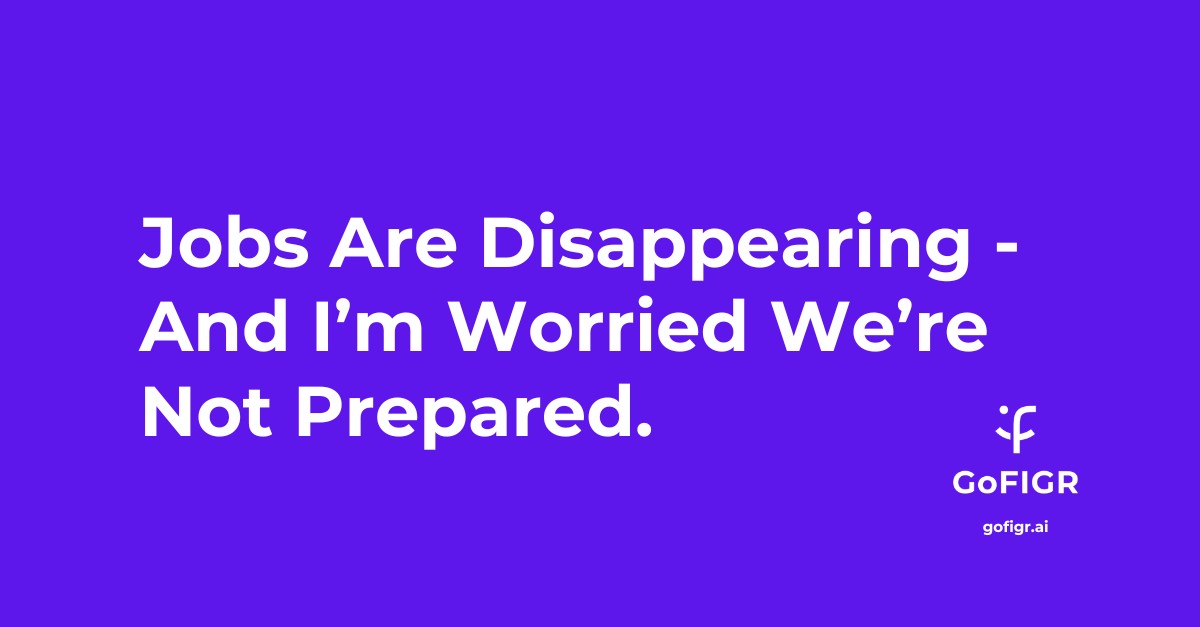Over the past 12 months, demand for AI-related skills has more than doubled. Entry-level roles are declining. Mid-level functions are quietly being absorbed in the name of efficiency. A few headline-grabbing companies - CBA, Atlassian, Amazon - have made this visible. But most of the time, it’s happening quietly:
Roles are restructured
Backfills don’t get replaced
Tasks shift without discussion
And yet, the majority of employees believe AI will affect someone else’s job - not their own.
This disconnect between what we know is happening and how we’re preparing people for it is becoming harder to ignore. And I'm worried we aren't more worried.
The Shift Is Underway - With or Without a Strategy
AI is no longer a “future of work” conversation. It’s already embedded in the tools we use every day - Salesforce, Copilot, Workday, Canva. It’s reshaping work at the task level, which means it’s often not visible until an event like a resignation or transformation. Or realising that culling your grad program will eventually have downstream effects on your future leadership pipeline.
To be clear, I am an AI fan and I don't think AI will steal jobs overnight.
But in most companies, there’s no coordinated plan for how AI will reshape roles, tasks, or career pathways. That doesn’t mean there’s no impact. It just means the organisation has no visibility and therefore little chance to act early.
The question isn’t whether AI will change your workforce - the toothpaste is already out of the tube. It’s whether you and your people will be ready for it.
Upskilling Is No Longer Optional - It’s a Business Lever
If you’re still thinking about upskilling as a learning initiative, you’re behind. Upskilling now sits at the intersection of:
- Risk: Avoiding mass displacement or attrition caused by role disruption
- Cost: Avoiding unnecessary external hiring for skills you could build
- Reputation: Avoiding backlash from employees, regulators, or media for not acting fairly or early enough
- Growth: Enabling your workforce to power new initiatives, enter new markets, and unlock productivity.
- Relevance: Keeping your organisation (and your people) aligned with where the world is headed.
According to research:
External hiring for AI or data roles can cost 30–40% more than internal development
Attrition costs 1.5–2.5x salary per person
Many roles can be reskilled faster and cheaper than expected, especially when you start early and use adjacent skill mapping
Whose Responsibility Is This?
Universities can’t fix this at the pace business needs. Governments are starting to regulate, not lead. And while external providers offer great tools and training content, it's often not specific enough. Things are messy.
Which leaves one place: inside the business.
HR and business leaders are closest to the work, the systems, and the people. That’s also where the biggest opportunity lies - to map what’s changing, signal where to shift, and help people move before they’re left behind.
What You Can Do Now
Take a critical look at your tech roadmap If you're introducing AI-powered tools but not considering the downstream impact on roles and tasks, you’re missing half the picture. Connect the dots between automation, augmentation, and displacement - for your people’s sake and your own.
Loop in your CIO: (or if you are the CIO, loop in HR) The future of work is no longer a siloed IT project or a people issue - it’s both. Strategic planning requires shared insight across functions.
Conduct a capability audit, or better still, a task analysis: Understand where you are today. What tasks are automatable? What critical skills or capabilities are becoming outdated? What's becoming more important? Where are the natural adjacencies? What’s likely to shift first?
Prioritise roles or people with big chunks of tasks at risk of automation: Not to eliminate them - but to plan forward pathways. This reduces friction, surprise exits, and long-term cost.
Set the conditions for learning: Access to free content is no longer the issue. Making space, time, and clear incentives for learning is. It doesn't all need to be AI training, either.
Create opportunities to apply new skills: Learning without application doesn’t stick. Use projects, stretch assignments or secondments to make it real.
Track outcomes: Promotions, mobility, retention, time to fill, and employee confidence and small success stories are your early indicators of progress.
Am I overthinking this?
AI is already reshaping the workforce. Pretending otherwise doesn’t change that. But business leaders still have a choice: to let it happen to them - or to lead through it.
While others scramble to hire scarce AI and data talent, early movers are already building it. While others deal with costly turnover, they’re redeploying trusted employees. While others react, they lead - with a workforce that’s equipped and aligned to where the business is going.
No one has all the answers yet. But doing nothing is the worst possible strategy.



